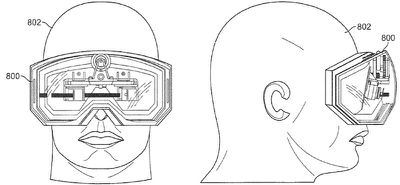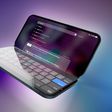Bloomberg's Mark Gurman this morning filed a story detailing the internal divisions at Apple that led it to change the course of its AR and VR headset development.

Specifically, the report covers disagreements between former Apple design chief Jony Ive and Mike Rockwell, the executive heading up Apple's secretive 1,000-strong group devoted to VR and AR, regarding fundamental aspects of the headset, codenamed N301.
N301 was initially designed to be an ultra-powerful system, with graphics and processing speeds previously unheard of for a wearable product. The processing capabilities were so advanced—and produced so much heat—that the technology couldn’t be crammed into a sleek headset. Instead, Rockwell’s team planned to sell a stationary hub, which in prototype form resembled a small Mac, that would connect to the headset with a wireless signal. In Rockwell’s early version, the headset would also be able to operate in a less-powerful independent mode.
Ive balked at the prospect of selling a headset that would require a separate, stationary device for full functionality. He encouraged Rockwell and his team to redevelop N301 around the less powerful technology that could be embedded entirely in the device. Rockwell pushed back, arguing that a wireless hub would enable performance so superior that it would blow anything else on the market out of the water. The standoff lasted for months.
According to the report, Apple CEO Tim Cook ultimately sided with Ive, who didn't want Apple promoting technology that would take people out of the real world. As a result, the headset no longer communicates with a separate hub, making graphics unlikely to be as good as they might have been, and download speeds potentially slower.
Although the headset now in development is less technologically ambitious than originally intended, it's pretty advanced. It's designed to feature ultra-high-resolution screens that will make it almost impossible for a user to differentiate the virtual world from the real one. A cinematic speaker system will make the experience even more realistic, people who have used prototypes say.
Prototypes of the N301 are said to look like a smaller Oculus Quest, Facebook's VR headset, with a mostly fabric body but less plastic than the Quest. Apple's engineering teams are reportedly still testing the device on different head shapes to find the ideal fit, and the company hasn't settled on pricing.
Apple wants the headset to have its own App Store "with a focus on gaming and the ability to stream video content, while also serving as a sort of super-high-tech communications device for virtual meetings." Siri will control the headset, although it is also reportedly being tested with a physical remote.
The N301 headset appears to be only one of Apple's ongoing AR/VR projects. The other is said to be a pair of AR glasses codenamed N421, with current prototypes said to resemble high-priced sunglasses with "thick frames that house the battery and chips." Ive, who left Apple last year after almost three decades at the company, is said to have preferred the concept of the N421 glasses.
Apple's augmented reality headset is expected to be released in 2022 followed by the sleeker pair of augmented reality glasses coming in 2023. You can read the full Bloomberg report here, and for everything we know on Apple's AR/VR plans, be sure to check our dedicated roundup.























